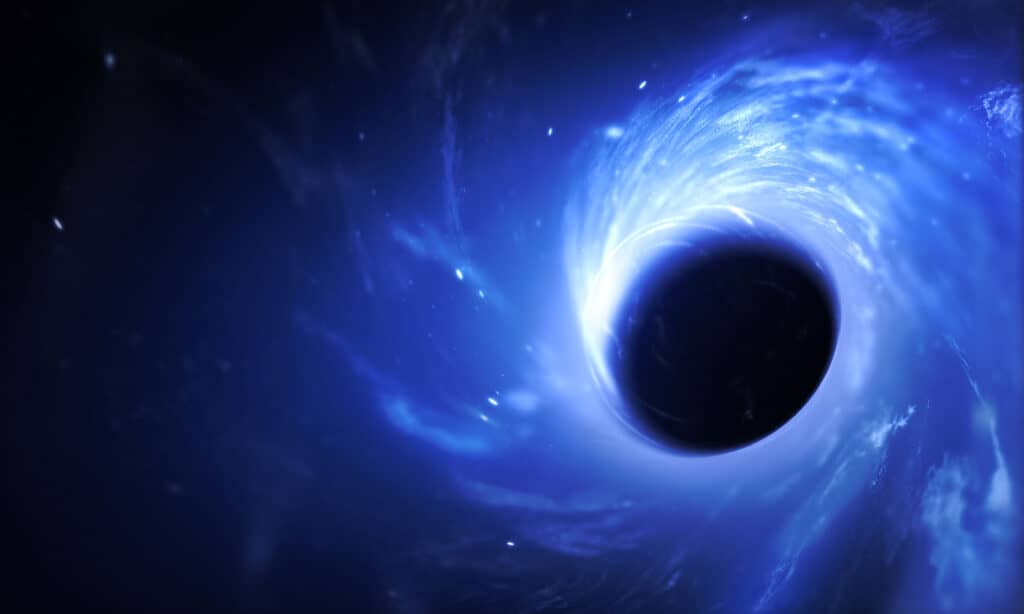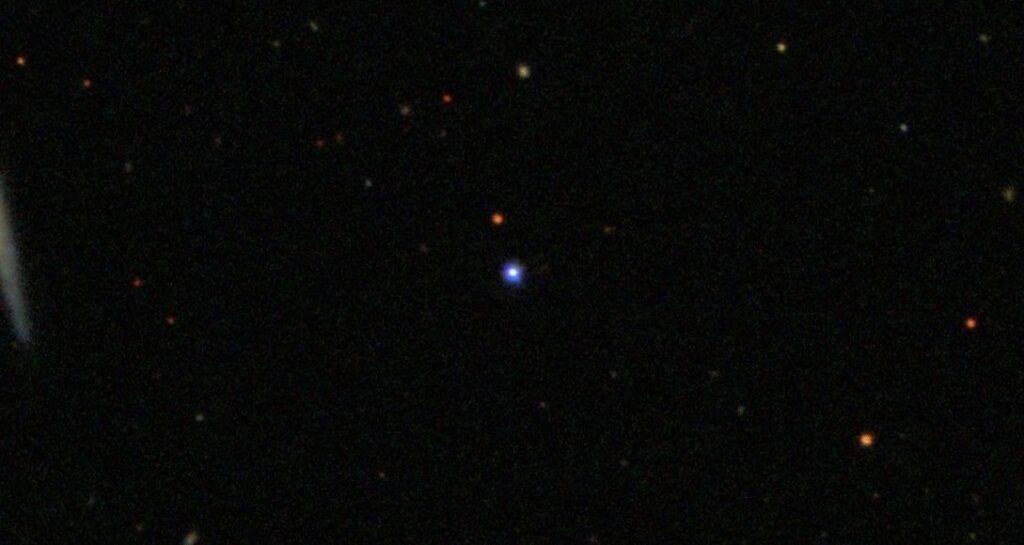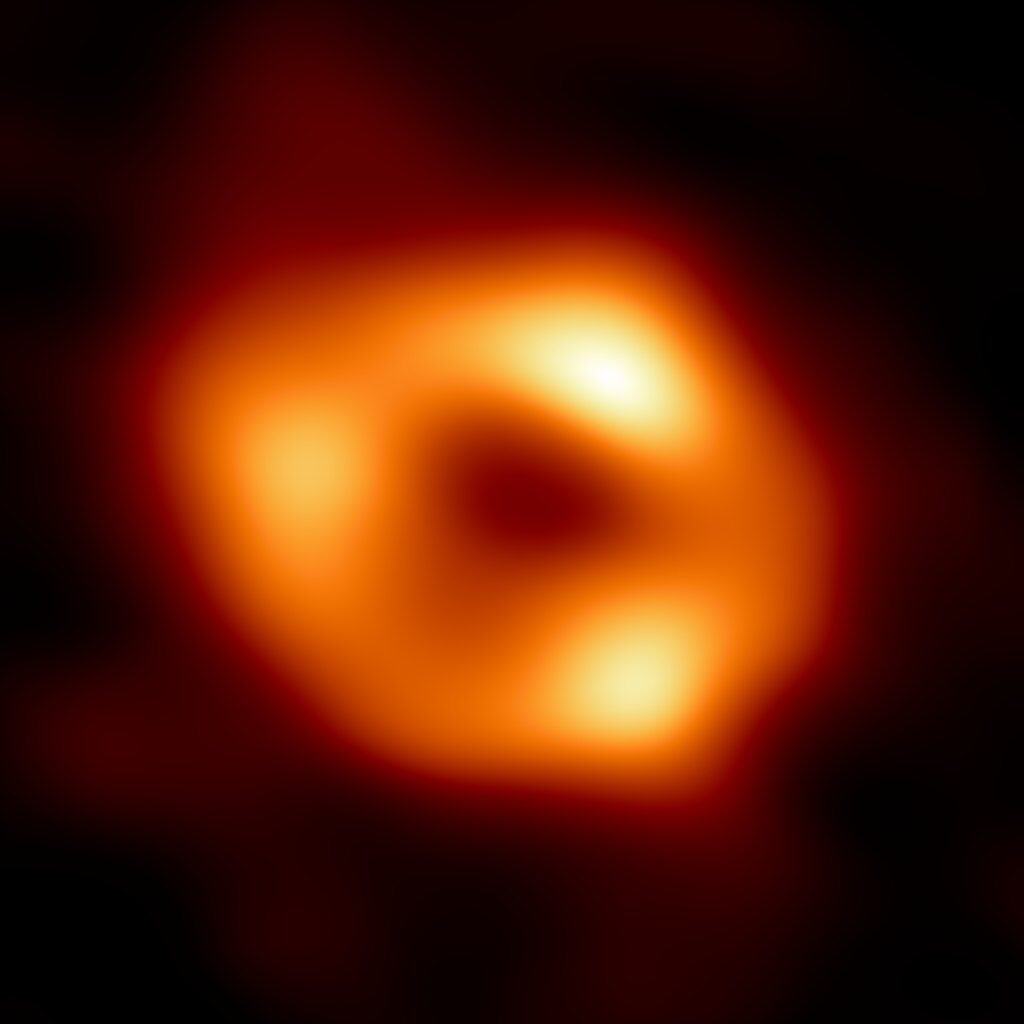The universe is filled with large planets and incredibly massive stars. While these beautiful celestial bodies are wonderful to behold, other objects that can inflict existential dread also exist. For example, black holes are objects that are unseeable by most traditional methods. Instead, we have to rely on the impact it has on other celestial bodies, like tearing a star asunder. Today, we’re going to discover the largest black hole ever found in the known universe.
We’ll talk about how large it is and how close a black hole is to Earth.
What Are Black Holes?

Black holes are often found at the center of galaxies.
©iStock.com/Petrovich9
Before we start looking at the largest black hole ever found in the known universe, we need to know what a black hole is. For the answer, we’re going right to the experts at NASA who say that black holes are regions in space with a “gravitational field so strong that nothing, not even light, can escape.”
Black holes are incredibly massive amounts of matter packed into an incredibly small area. NASA likens it to a star ten times larger than the Sun being jammed into an area smaller than New York City. Since nothing escapes black holes, we can’t observe them with the tools we have that detect light or radiation.
Instead, we can only look for black holes by searching for the way they affect light and gravity near them. For example, if a star passes by a black hole, then we can see the impact that it has on that celestial body. A recent event called ASASSN-19bt was responsible for a tidal disruption event (TDE) that occurred when a star got too close to a black hole.
Essentially, the incredible gravity of the black hole shredded the star, destroying it and putting stellar debris into relativistic jets or forming an accretion disc around the black hole. The supermassive black hole that caused the event is believed to be 6 million times as large as the Sun, and it is at the center of another galaxy called 2MASX J07001137-6602251
Presently, it is believed that a supermassive black hole exists at the center of every galaxy.
What Types of Black Holes Exist?

Stellar black holes are smaller than supermassive black holes.
©iStock.com/buradaki
Believe it or not, at least three different types of black holes exist, and each form in a different way. Take a quick look at what types exist and how they develop.
- Primordial black holes probably formed right after the big bang, and they can be as small as a single atom, but they have a large amount of mass.
- Stellar black holes develop when the core of a very, very large star collapses in upon itself, going supernova.
- Supermassive black holes are a bit of a mystery. Scientists know that they are at the center of galaxies and that their mass and gravity depend on the size of the galaxy they occupy. Aside from that, we don’t yet know how supermassive black holes form. One idea is that supermassive black holes grow from their small size to large ones by taking in gas and interstellar dust or by merging with larger celestial bodies.
Other theories about how black holes are created include high-energy collisions. However, no evidence of these has been detected. This possibility worried people for a brief moment during the search for the Higgs boson. The process used the Large Hadron Collider at CERN, and people thought it could generate a world-ending event.
Knowing how these celestial regions develop is one thing, but one lingering question remains: what happens inside of a black hole?
What Happens Inside a Black Hole?
The truth is that we can only theorize about exactly what happens inside of a black hole. However, one theory is that whatever ends up in the singularity of a black hole is squished into an infinitely small point.
Any matter that enters the event horizon of the black hole is shredded into subatomic parts and then enters the singularity. Anything that enters the event horizon is isolated from the rest of space-time. At least, that’s what we think happens right now.
What Is the Largest Black Hole Ever Found in the Known Universe?

Ton 618 is the largest black hole known.
©Sloan Digital Sky Survey, Apache Point Observatory, Astrophysical Research Consortium / Creative Commons – License
The largest black hole ever found in the known universe is found in Ton 618. This is a hyper luminous Lyman-alpha blob that has a black hole that measures 6.6×1010 solar masses. It has a mass that equals about 66 billion times that of the Sun. This supermassive black hole is some 18.2 billion light-years from Earth. It’s located somewhere between Canes Venatici and Coma Berenices.
Ton 618 is thought to be the nucleus of a galaxy, and it’s known as being one of the brightest objects in the universe. We still have much to learn about this celestial body. For now, though, we only know that it is probably home to the biggest black hole ever found.
Of course, we could find larger ones with a renewed emphasis on exploring the universe. After all, the universe is a big place.
How Large is the Black Hole at the Center of the Milky Way?

Sagittarius A* is the supermassive black hole in the Milky Way.
©EHT Collaboration / Creative Commons – License
As we’ve said, it is believed that supermassive black holes exist at the center of every galaxy. The one at the center of our galaxy is called Sagittarius A*. This black hole has a mass of about 4.154×106 solar masses. It’s far smaller than the largest black hole ever found in the known universe.
Perhaps the most interesting thing about this black hole is not its size. It is the fact that we have a “picture” of this black hole. In May 2022, astronomers released a picture using the Event Horizon Telescope that showed the accretion disc around the event horizon of Sagittarius A*. While that’s not a picture of an actual black hole, it’s a picture of the proof that one exists there.
While some people hear the term black hole and imagine that it’s going to swallow the galaxy, that’s not how they work. Black holes aren’t galaxy-swallowing celestial bodies as far as we know.
For now, we believe that Ton 618 is the largest black hole. Yet, even larger ones may exist that we haven’t found yet.
Up Next…
The photo featured at the top of this post is © iStock.com/Petrovich9
Thank you for reading! Have some feedback for us? Contact the AZ Animals editorial team.






